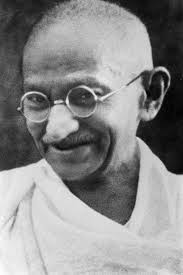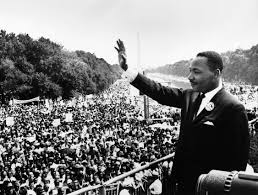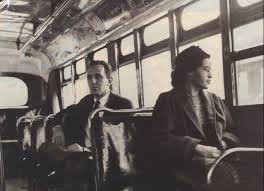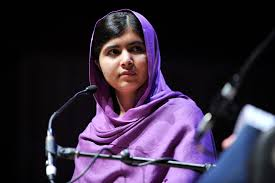|
"There is no easy walk to freedom anywhere, and many of us will have to pass through the valley of the shadow of death again and again before we reach the mountaintop of our desires."
Nelson Mandela There are many wars and conflicts going on in the world today. Some people tend to see violence as the best means to solve a conflict. However, there are other ways; freedom and justice can be achieved also by peaceful means. Mahatma Gandhi, Dr. Martin Luther King and Nelson Mandela are examples of how freedom and democratic rights can be won through non-violent methods.
Segregation For more than 200 years before the Civil War, slavery existed in the United States. But after the war things began to get worse for blacks. The south thought they needed to do something. The Southern legislatures, former confederates, passed laws known as the black codes, after the war, which severely limited the rights of blacks and segregated them from whites. They were separated at schools, theaters, taverns, and other public places. So, Congress quickly responded to these laws in 1866 and seized the initiative in remaking the south. Republicans wanted to ensure that with the remaking the south, freed blacks were made viable members of society. But the strong southern legislatures finally gave in; in 1868 they repealed most of the laws that discriminated against blacks. When the U.S. entered WW II, the south was a fully segregated society. Everything from schools, restaurants, hotels, train cars, waiting rooms, elevators, public bathrooms, colleges, hospitals, cemetery, swimming pools, drinking fountains, prisons, and even churches were for whites or blacks, but never for both. The three major factors that contributed to the Civil Rights Movement was the Great Migration, the changing nature of African American politics, and the social and cultural changes connected to war itself. Apartheid Apartheid was a political and social system in South Africa while it was under white minority rule.This was in use in the 20th century, from 1948 to 1994. In the system, the people of South Africa were divided by their race and the races were forced to live apart from each other. There were laws that kept up the racial separation. The system was used to deny many rights of non-white people, mainly black people who lived in South Africa in the beginning. The laws allowed the white people to keep the black people out of certain areas. Black people had to carry special papers or have permission to live and work in certain areas. The government separated mixed communities and moved many people by force. Many laws were made, for example: people of different races were not allowed to marry each other; black people could not own land in white areas or vote. Kildehenvisninger
http://www.brainyquote.com/quotes/quotes/n/nelsonmand131681.html#0wbx4yu18swlKP1m.99 https://www.google.no/search site=imghp&tbm=isch&q=ghandhi&tbs=sur:fmc&gws_rd=cr&ei=tXJAVtyAEOKfyAOdhL7ACw https://www.google.no/search?site=imghp&tbm=isch&q=ghandhi&tbs=sur:fmc&gws_rd=cr&fmc&tbm=isch&q=martin+luther http://www.kawvalley.k12.ks.us/brown_v_board/segregation.htm https://www.malala.org/malalas-story http://www.biography.com/people/martin-luther-king-jr-9365086#education-and-spiritual-growth https://simple.wikipedia.org/wiki/Apartheid_in_South_Africa |
To learn more of each freedom fighter, click on their image! |
Klikk her for å redigere.




